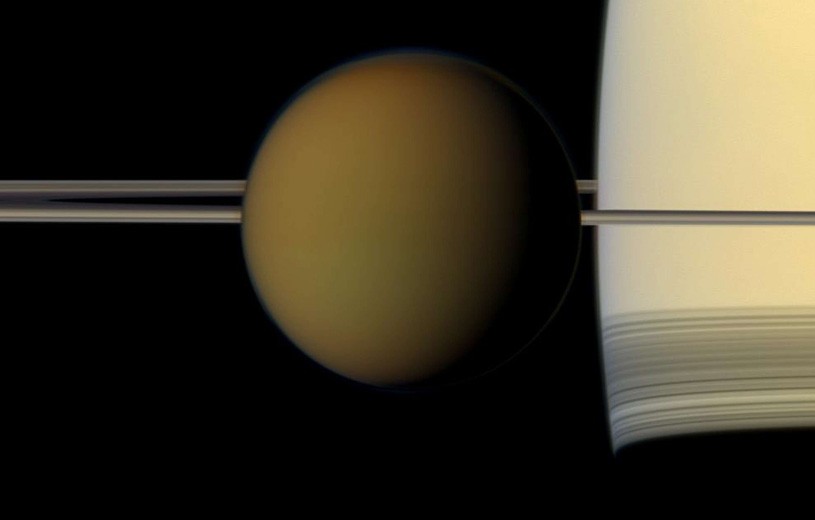NASA researchers announce that they have identified cyclopropenylidene in Titan's atmosphere, and this is a first. This extremely rare molecule is so reactive that it can only exist on Earth in the laboratory.
If you've never heard of cyclopropenylidene, or (C3H2), that's normal. It is indeed an extremely rare molecule that can only exist on Earth in the laboratory as it is reactive. It would seem that this molecule, made of carbon and hydrogen, is indeed present in the atmosphere of Titan, the largest moon of Saturn. NASA researchers have indeed detected its presence thanks to the Atacama Large Millimeter / submillimeter Array (ALMA), a network of radio telescopes found in Chile.
Cyclopropenylidene is a highly reactive molecule . Otherwise, it readily reacts with other molecules it comes in contact with, forming other "molecular species".
C3H2 had previously been detected in clouds of gas and dust across the galaxy. These regions are indeed still cold and diffuse enough to limit these chemical reactions . An atmosphere, on the other hand, is something else, especially that of Titan, considered by NASA to be a "hive of chemical activity". ". As a reminder, its thick atmosphere is four times denser than that of the Earth .
Note that the researchers isolated the presence of this molecule in the upper atmosphere of Titan, where the environment is still less dense. For the time being, researchers still do not know why cyclopropenylidene appears in this environment, but in no other atmosphere.
This type of study will be interesting, insofar as this molecule could be a building block for more complex organic molecules that have allowed the development of life on Earth .

It should be known that the types of molecules found today on Titan could be the same as those that formed the building blocks of life on Earth ago 3.8 to 2.5 billion years old , when methane filled Earth's air instead of oxygen. That is, when Earth conditions were similar to Titan today.
“We are trying to determine if this moon is habitable “, explains geologist Rosaly Lopes, from NASA’s Jet Propulsion Laboratory. "So with that in mind, we want to know what compounds reach the surface, and whether those materials can pass through Titan's icy crust to eventually reach its subterranean ocean where we believe that the conditions are more favorable for the development of life “.
In this sense, determining which compounds are present in the atmosphere is a very important step in this research process. "We will mainly be looking for molecules larger than C3H2, but we also need to know what is happening in the atmosphere to understand the chemical reactions leading to complex organic molecules forming and raining down on the surface “, emphasizes Melissa Trainer, astrobiologist at NASA.

Cyclopropenylidene is also of particular interest as it is a so-called "cyclic" molecule. In other words, its three carbon atoms are linked together in a closed loop. While cyclopropenylidene by itself does not appear to play any role in modern biological reactions, these closed-loop molecules are important because they form the 'skeletons' of DNA nucleobases , the complex chemical structure that carries the genetic code for life, and RNA , another essential compound for life.
In other words, their structure makes it possible to build biologically more important molecules s. Moreover, we also know that the smaller these molecules are, the more potential they have (bond-reactions occur more and more quickly). Previously, benzene (C6H6) was thought to be the smallest cyclic molecule found in any atmosphere (including that of Titan). However, we know that cyclopropenylidene is an even smaller molecule.